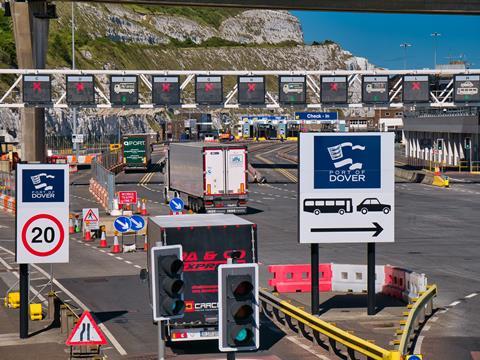Trade body says members need reassurance there are sufficient staff and infrastructure to carry out checks required for Entry/Exit Scheme

The EU has announced that its Entry/Exit Scheme (EES) will go live on 12 October, with business group Logistics UK welcoming the certainty the launch date gives its members but calling for more detail.
EES is a new digital border management system for non-EU citizens travelling to the Schengen Area. It will replace the manual stamping of passports and will register the entry and exit of travellers (and hauliers) using biometric data like fingerprints and facial scans. EES is scheduled to launch on 12 October 2025.
“With only 11 weeks until implementation starts, there is still much detail for the government to confirm, including details of where and how these checks are to be undertaken for those moving goods across the border,” said Josh Fenton, policy manager at Logistics UK.
“With such a short timeframe left, Logistics UK is seeking urgent clarification from the Department for Transport and the EU authorities.
“While only a small percentage of border crossings will need to be registered via EES and the collection of biometric data from the start date, the EU’s stated plan is to increase coverage to 100 per cent of all vehicles transiting from the UK at the end of the 180-day introduction period. It remains to be seen how and when this increase is to be implemented.”
Fenton stressed that there are still questions to be answered over parts of the scheme. “Logistics UK needs reassurance that there are sufficient staff and infrastructure capacity available to undertake the necessary checks in the short to medium term,” he said.
“Our estimates show that around 46,000 companies, spread throughout the UK, regularly trade in goods where at least 25 per cent of the commodities they deal with pass through the Short Straits at Dover.
“Any delays that occur at the border will have a knock-on effect nationwide and could have a significant impact on the country’s ability to trade with the EU in the longer term, as well as affecting the availability of goods within the supply chain. This is particularly relevant as winter approaches, when the UK relies more heavily on imported goods, particularly foods.
“In addition, our members – which move all the goods that the UK economy relies upon – are reiterating their call for the development and introduction of a digital solution to the system, such as an app, which can be used to ensure a seamless movement of vehicles across the border, with minimal or no delays.
“Our members are concerned that delays could be exacerbated during times of high consumer traffic, such as school or public holidays, which can also impact freight movements.”
The timing of the introduction of EES is of concern to Logistics UK, which warned that the system is set to be introduced at a critical time of year for the UK’s food supplies, when the country relies on imported produce from the EU.
With that in mind, the trade body said it is critical that the UK secures an effective agreement with the EU to keep any checks needed on these goods to a minimum.
“It is also imperative that the UK and EU reach a workable agreement on access arrangements for drivers to enable British drivers to work and travel on the continent,” Fenton said.
“Currently, non-EU citizens can only have access for 90 days in every 180. Without an agreement, the working capabilities of British hauliers in the EU will be severely limited and the situation could cause breakdowns in the UK’s supply chain at a time of year when the country relies on goods from the European Union.
“With the new border arrangements due to come into effect in only a few weeks, Logistics UK is keen to work with the government to solve these issues and keep the flow of goods that the country relies on moving freely across its borders.”



